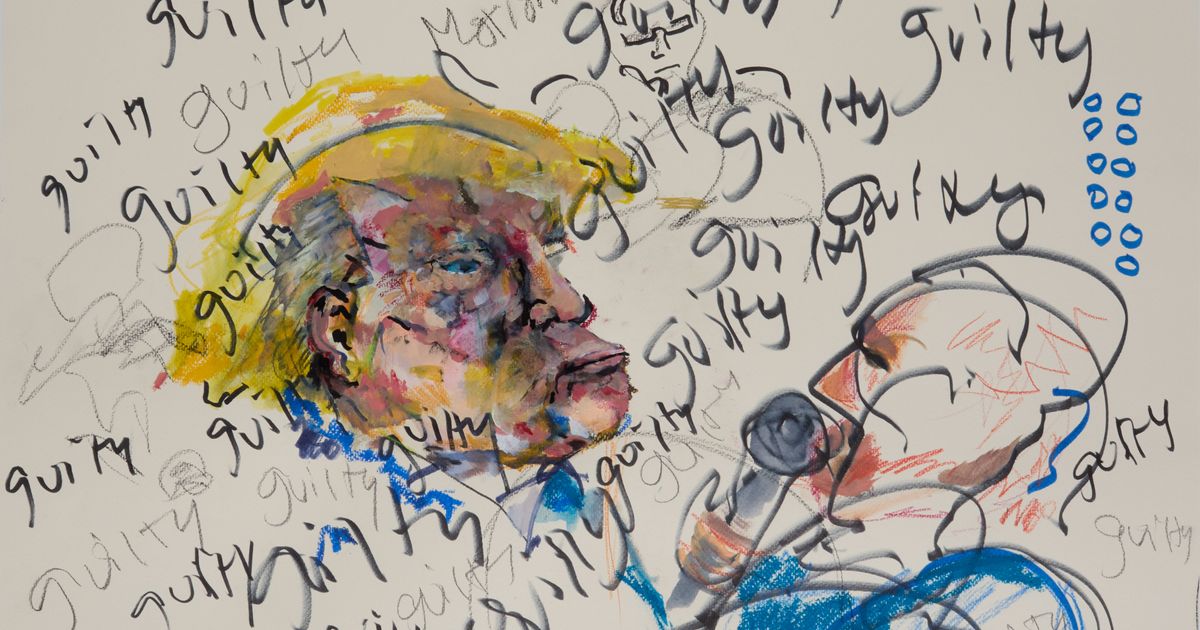What It Was Like in Court the Moment Trump Was Convicted

🌈 Abstract
The article discusses Donald Trump's criminal trial in New York, drawing parallels between the courthouse proceedings and a political convention. It describes the complex legal theory advanced by the prosecution, the jury's deliberations, and Trump's attempts to undermine the trial through social media attacks. The article also highlights the judge's efforts to maintain control of the proceedings and Trump's eventual conviction on 34 felony counts of falsifying business records.
🙋 Q&A
[01] The Courthouse Proceedings
1. What parallels did the author draw between the courthouse proceedings and a political convention?
- The author said the courthouse proceedings reminded them of covering a political convention, with a "programmed event, with tentpole speakers, like the star witness, Michael Cohen" and a "nominee, chosen by indictment, who swept in each day with a swarm of loyal surrogates."
- The author also noted the presence of a "press pack, wearing credentials on their lanyards, all writing down the same words, and breathing the same stale air."
2. How did the atmosphere shift as the case went to the jury?
- The author said the atmosphere shifted to feel more like "Election Day, when there's nothing left to do but wait." The reporters "hung around the 15th floor of the Manhattan criminal-court building, trading theories and gossip, trying out takes."
3. How did the jury's deliberations unfold?
- The jury seemed in no hurry, passing notes to the judge on the first day asking for a read-back of testimony and his jury instructions. The next day, the judge re-explained the law to the jury.
[02] The Prosecution's Legal Theory
1. What was the prosecution's complex theory of the case?
- The Manhattan district attorney advanced a theory where "one intended crime (a conspiracy to win election via illegal means) was accomplished through a second intended crime (the jury could take its pick from several options, including the violation of federal campaign-finance laws), and concealed through a third crime."
- The charges Trump faced, 34 counts of falsifying business records, related only to the coverup, but the prosecutors argued this elevated the normally misdemeanor offense to a felony.
2. How did the prosecutor frame the underlying crime in his summation?
- Prosecutor Joshua Steinglass told the jurors they should analyze the evidence through "the prism" of "three rich and powerful men, high up in Trump Tower, trying to become even more powerful by controlling the flow of information that might reach the voters." In other words, the underlying crime was the denial of knowledge to voters.
[03] Trump's Legal Strategy
1. How did Trump try to undermine the trial through social media?
- Before the trial, Trump attacked the judge, Merchan, as a "biased hack," calling attention to the judge's small political donations and his daughter's work as a Democratic political consultant.
- During the trial, when a gag order forced Trump to stop attacking the judge directly, his son Donald Trump Jr. stepped in, calling the trial a "political persecution" and a "witch hunt."
2. How effective was Trump's "demean-and-destroy" legal strategy in this case?
- The article states that this strategy "works so well for him as a candidate is less effective within the legal system." Judge Merchan kept the case on a tight schedule, denied attempts to delay the trial, and held Trump in line, not tolerating any juror intimidation.
[04] The Verdict and Aftermath
1. How did the jury's verdict unfold in the courtroom?
- The jury reached a verdict on the second day of deliberations. When the judge announced they had a verdict, there was an "audible gasp" and "clatter of laptops" from the reporters in the gallery.
- Trump's son Eric left the courtroom with a "stricken expression" before returning. Trump himself sat at the defense table, preparing to "take the punch" as the jury foreman pronounced him guilty 34 times over.
2. How did Trump respond to the guilty verdict?
- Trump showed no visible reaction, despite never admitting defeat or accepting punishment before. On his way out of the courthouse, he gave a "dispirited, jerky handshake" to his son and then delivered a statement calling the trial "rigged" and "disgraceful."
- He claimed the "real verdict is going to be November 5 by the people," suggesting he believes he can overturn the conviction through the 2024 election.